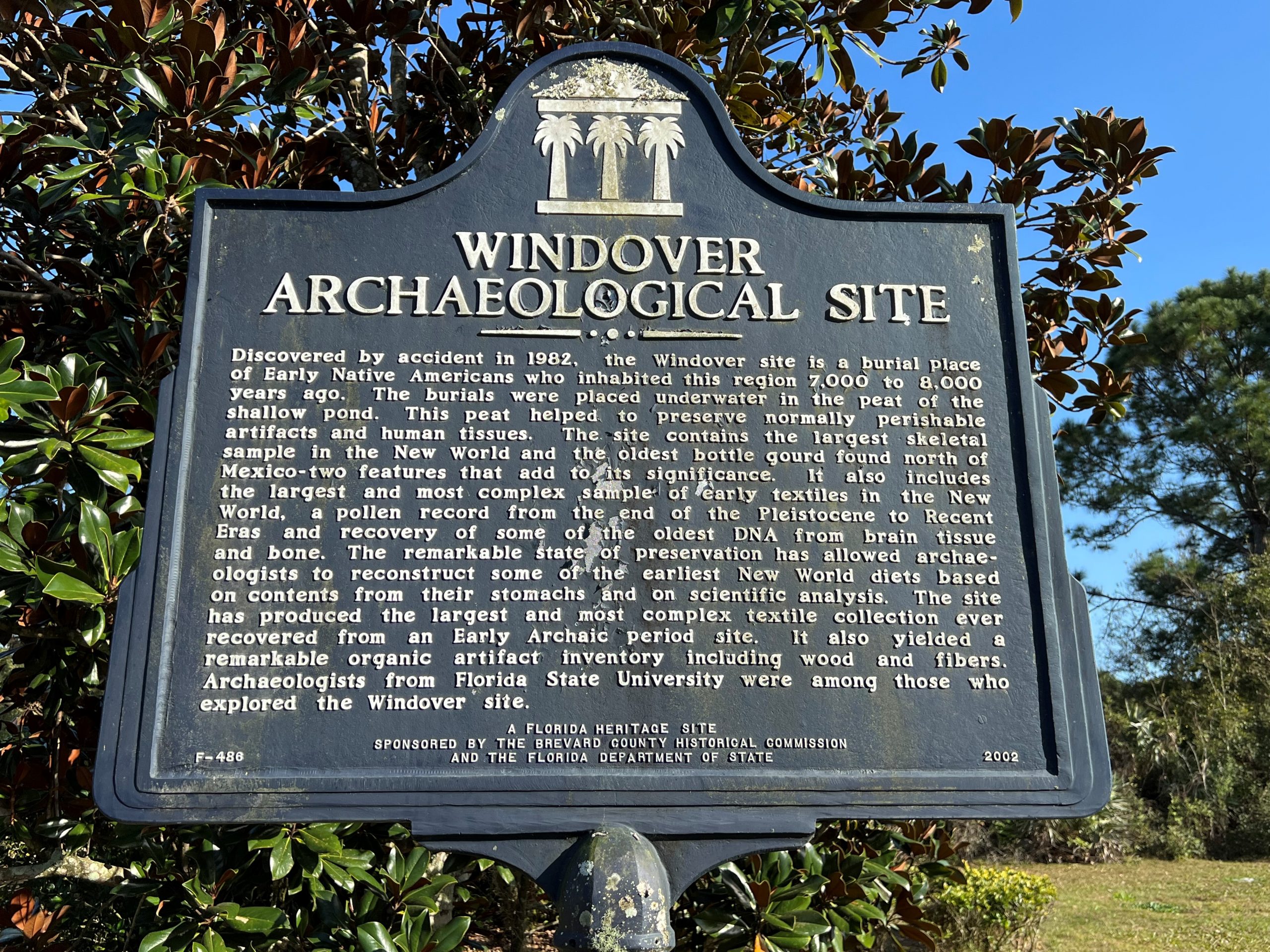Around 8,000 years ago near the east coast of central Florida, a group of Archaic people lived by a small pond. Eventually, they died, and their remains were buried in the pond. Their existence was unknown until, in the early 1980s, a backhoe operator preparing the land for the construction of a subdivision, scooped up a human skull.
The discovery of the skull and other human remains initially resulted in the suspicion of a recent mass murder, but county medical examiners determined that the human remains were very old, and consequently, they contacted the anthropology department at Florida State University. Under the direction of Florida State archaeologist Glen Doran, the excavation of the one-half acre pond, now known as the Windover site, was soon underway, and over the next several years discoveries were made that informed archaeologists about Florida’s ancient people. The shallow pond turned out to be an ancient burial site for these early people and the peat sediments and water chemistry was such that it preserved both human remains and grave goods.
The excavations uncovered more than 160 human skeletons, many of which were fully articulated. Some of these skeletons had complete brains—though the brains were shrunken to a third of their normal size—and numerous others included brain tissue. The stomach of a female around the age of 35 still had remnants of her last meal: fish scales and bones, grass and berry seeds, and pieces of nuts. Radiocarbon dating indicated the skeletons ranged in age from about 7,000 to 8,000 years old. Hand tools made of bone and wood and cloth made of woven plant fiber were also recovered.
Located in a subdivision, the Windover site is approximately 8.5 acres and consists of five wooded lots that surround the small pond. Doran is of the opinion that only half of the pond has been excavated and more cultural resources remain buried within the peat as well as in undisturbed areas around the ancient pond.
Scientists from around the world have taken part in the study, preservation, and analysis of materials recovered from the pond. Many of the artifacts are displayed at the Brevard Museum of History and Natural Science in Cocoa, Florida, and other are housed at Florida State University. The site has also been well documented in books and films and featured in National Geographic magazine.
Windover is listed on the National Register of Historic Places and is also designated a National Historic Landmark. It’s one of the country’s most significant archaeological sites, and it will now be preserved by the Conservancy.




